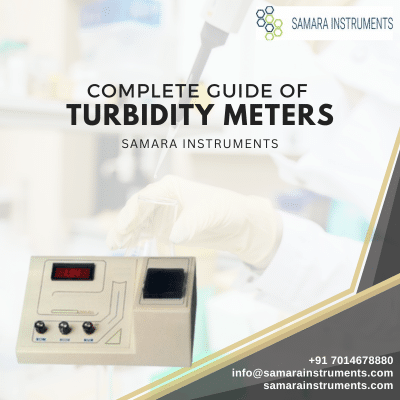Understanding the Turbidity Meters
The Turbidity Meter is a specialized device crucial for measuring the cloudiness or haziness of a fluid. This article delves into its functionalities, key components, applications, and the crucial role it plays in delivering precise turbidity measurements.
Key Components of the Turbidity Meter
The Turbidity Meter is a complex instrument with various components working together to provide accurate measurements. These components include:
- Light Source: Typically an LED, it illuminates the water sample, initiating the turbidity measurement process.
- Detector: This component is responsible for measuring the light that is either scattered or absorbed by particles in the water sample.
- Sample Chamber: The sample chamber holds the water being tested for turbidity analysis, ensuring a controlled environment.
- Display and Controls: Equipped with a display that showcases turbidity readings, the controls allow users to make adjustments based on specific requirements.
How Does the Turbidity Meter Work?
Understanding the operational principles of the Turbidity Meter is crucial for accurate measurements:
- Illumination: The light source emits a beam into the water sample.
- Scattering and Absorption: Particles present in the water scatter and absorb the light, affecting its intensity.
- Detection: The detector measures the intensity of light that passes through the sample, capturing the impact of scattered and absorbed light.
- Conversion to Turbidity Units: The meter translates the detected light intensity into turbidity units, commonly expressed as nephelometric turbidity units (NTU) or formazin nephelometric units (FNU).
Applications of the Turbidity Meter
The Turbidity Meter finds diverse applications across various industries, playing a pivotal role in ensuring water quality:
- Environmental Monitoring: In environmental science, turbidity measurements assist in evaluating the quality of water bodies, such as rivers, lakes, and oceans.
- Drinking Water Treatment: Water treatment plants utilize turbidity meters to monitor and control the efficiency of filtration processes, crucial for delivering safe drinking water.
- Wastewater Treatment: Turbidity monitoring in wastewater treatment facilities is essential to guarantee that treated water adheres to stringent regulatory standards before release.
- Aquaculture: Turbidity meters contribute to maintaining optimal water quality in fish tanks and ponds, ensuring the well-being of aquatic organisms.
Significance of Turbidity Measurement
Accurate turbidity measurement holds significant implications across various domains:
- Water Quality Assessment: Turbidity serves as a key indicator of water quality, allowing for the identification of potential contaminants affecting clarity.
- Regulatory Compliance: Many environmental regulations prescribe turbidity limits to safeguard aquatic ecosystems and guarantee the safety of drinking water.
- Efficient Water Treatment: By monitoring turbidity, water treatment plants can optimize their processes, ensuring effective removal of particles and impurities.
- Aquatic Health: In aquaculture, maintaining appropriate turbidity levels is crucial for the health and well-being of aquatic organisms.
Choosing the Right Turbidity Meter
Selecting an appropriate Turbidity Meter involves considering several factors to meet specific measurement needs:
- Expected Turbidity Range: Consider the expected range of turbidity in the samples to ensure the meter’s suitability for the task.
- Measurement Accuracy: Precision in turbidity measurement is critical, and the chosen meter should offer the required level of accuracy.
- Additional Features: Some turbidity meters come with advanced features like data logging, digital connectivity, and user-friendly interfaces, enhancing their overall utility.
Conclusion
In conclusion, the Turbidity Meter emerges as an indispensable tool in water quality analysis, contributing significantly to the maintenance of clean and safe water sources. By comprehending its key components, operational principles, applications, and the overarching significance of turbidity measurement, users can make informed decisions in selecting and utilizing Turbidity Meters.
In a world where water quality is paramount, Turbidity Meters stand as guardians of transparency, ensuring the health of aquatic ecosystems and the safety of drinking water. The continued advancement of these instruments promises further refinement in accuracy and functionality, reinforcing their role in the ongoing quest for pristine water quality.
To purchase this product you connect with us over whatsapp


